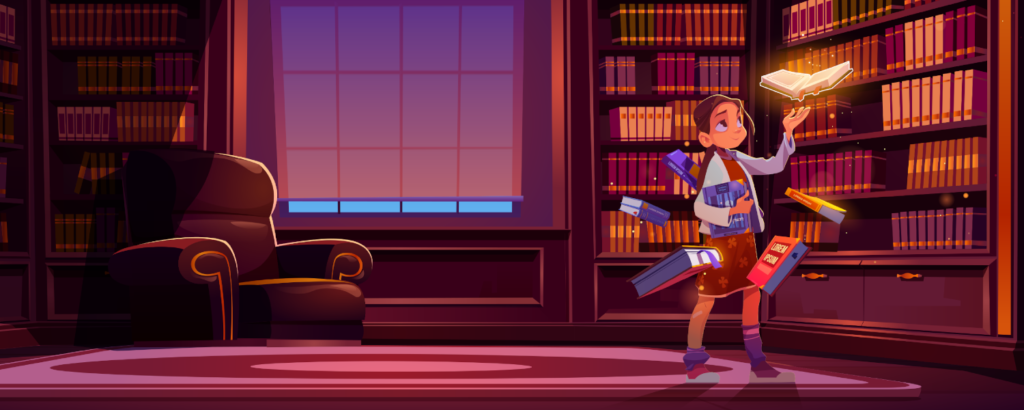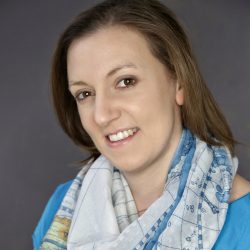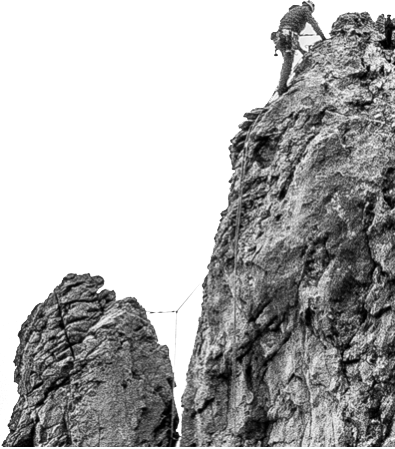“I have such a difficulty with elevator pitches!” declared Dr. Marta Lenartowicz when I asked her to kick off our interview with one about Buckminster College, the new educational endeavor for which she is the principal. “Maybe I need a nice winding staircase.”
I found her remark promising. But then, I share her distaste for elevator pitches. Creators are told over and over that it’s essential, and my experience running Third Factor has shown me why that is. One must be able to attract the right people, and if you can’t clearly describe what you’re offering, you won’t do so.
And yet, for a project like Buckminster College, it would strike me as a bad sign if it could be packaged up too neatly. To give you the most basic information, it’s an independent, international secondary school for ages 10-18, operating within the International Baccalaureate framework, slated to launch in September 2024. For the 2023-24 school year, they will offer eleven- to fifteen-year-olds an interdisciplinary part-time secondment to be combined with their regular schooling as they get the full school up and running.
To truly grasp what Buckminster is trying to do, however, we’ll need a lot more.
“The School of Thinking created a very interesting community,” Marta said. She told Third Factor about that project in our January 2020 issue: it’s a postgraduate program at Vrije Universiteit Brussel (The Free University of Brussels) designed to help adult students cultivate a more intentional process of thinking. Throughout their program, students would ask the instructors, Why don’t you teach this earlier? Why did we not learn this in school?
Throughout their program, students would ask the instructors, Why don’t you teach this earlier? Why did we not learn this in school?
“That was the punchline that produced this project,” Marta continued. “Why not? Actually, we could!”
“That was the punchline that produced this project,” Marta continued. “Why not? Actually, we could!” The Buckminster Project is the School of Thinking community’s effort to teach young people like they used to be what they wish they’d learned. For many of those people—and these, Marta thought, are the same sort of people who tend to read Third Factor—“adolescence didn’t go so well in terms of, well, many factors. It’s a very sensitive period. So what we’re trying to do is to ask, ‘What would it look like if it were done right?’”
This is the problem that Buckminster College is meant to solve. The school’s website offers an elevator pitch that would work so long as you were riding in a particularly long elevator—perhaps the sort that takes you to a glorious observation deck, with your ears popping along the way:
[W]e are preparing to launch an ambitious secondary school project suitable for young people whose learning styles and needs demand interdisciplinary big-picture thinking and require a psychologically savvy holding environment. Our comprehensive ‘Spaceship Earth’ curriculum is academically demanding and designed to guide the cognitive development of our learners along accelerated, asynchronous, and divergent learning trajectories.
The challenge we undertake at Buckminster College is to navigate our educational practices between what seems like opposing paths. One safeguards the traditions and wisdom inherited from past generations. It emphasises the necessity of responsible belonging, as well as the high moral value of diligent expertise and mastery. There might be no single instruction manual for the human condition, but there are thousands of thousands of volumes detailing various attempts at figuring it out. Being a literate grownup means having an access key to that monumental library. The other path expresses the daring wisdom of unhindered individuality and uniqueness, reminding us that the spirit of adventure and exploration is the deepest of human traditions. It must be carefully cultivated.
Weaving a golden path between exploration and belonging, between the well-tested and the unknown, is a paramount mark of our civilisation—and of our times. Partaking in this challenge, Buckminster College is like any other place on Earth: a microcosm of the universal human adventure.
One of Buckminster’s instructors is Lotte van Lith, who was also an early interviewee here at Third Factor. When she spoke to us in 2019, she told us how Kazimierz Dabrowski’s theory of positive disintegration (TPD) helped her overcome the eating disorder she experienced as a teenager. That adds some rich background perspective to what she told me here when speaking about the school where she’ll teach: “Adolescence is when people may rediscover or learn to perceive, or are perhaps even more sensitive towards, the multilevel reality in themselves.”
Dabrowski and Multilevelness
This idea that Lotte mentioned, perceiving multilevelness, is an foundational concept in TPD. Listening to Marta and Lotte talk about this project, it was clear that the aim of cultivating multilevel understanding is baked into the Buckminster cake. Lotte, who has focused in depth on Dabrowski’s work in work as a coach to the gifted, brought it up several times in our conversation.
So before we go on, let’s flesh this idea out a little bit. As regular readers will already know, the theory describes the developmental trajectory of a personality through levels that are increasingly organized, autonomous, ethical, and prosocial. The path Dabrowski described is all about growing by sorting out the higher and lower in our emotions and our behaviors. In Multileveness of Emotional and Instinctive Functions, published posthumously in 1996, Dabrowski explains that someone at a low level looks at love or aggression in a certain simple way, but that there are also higher, richer ways to understand and express love or aggression.
Moreover, Dabrowski believed we can look at reality itself through a multilevel lens. He believed that a person at a low level of development will fail to see the inherent possibility that life could be different from what it is at present. “It is not uncommon that highly intelligent and educated people—scholars and scientists—may lack the perception of the multilevelness of reality. Conception of reality is limited only to what is tangible, concrete, and available to sensory cognition. It is the reality of everyday life and statistically established norms,” Dabrowski wrote.
As one ascends through Dabrowski’s levels, however, the existence and importance of multilevel reality becomes clear. At level II, though one may recognize multilevel elements in emotional experiences and intellectual understanding, that recognition is inconsistent. “Changeable vogues and theories influence a person’s changing unstable conceptions of reality which either keep on replacing each other or boil down to paradoxical relativistic views that the subjectivity of individual realities cannot be known, but at the same time it is all molded by society and culture (second factor),” writes Dabrowski (60).
Changeable vogues and theories influence a person’s changing unstable conceptions of reality which either keep on replacing each other or boil down to paradoxical relativistic views that the subjectivity of individual realities cannot be known, but at the same time it is all molded by society and culture.
Kazimierz Dabrowski
As our disintegrating individual continues this ascent into level III, the possibility emerges “of finding access to the world of ‘higher reality,’ a world of new ideas, new creative stimuli, new intense dreams, rather than remain in the world of everyday reality, full of boredom, full of trivial relations, a reality repulsive in its monotony and uneventfulness.” (62)
That certainly sounds relevant enough to the Buckminster Project!
In this process, alongside creativity comes the development of character. Self-awareness and self-control “enable a person to experientially see and analyze lower and higher levels of reality. Thus, one clearly sees, analyzes, and differentiates primitive levels of reactions, stimuli and responses as lacking inner psychic transformation and one contrasts them with the complex higher levels of emotionally rich, multilevel, autonomous and authentic behaviors of high empathy and insight into oneself.” (62)
Sounds like a good foundation for an adolescent social and emotional learning curriculum, doesn’t it?
Returning to our conversation, Lotte continued, “And then they learn how how to choose in that way, how to express what Dabrowski would call their personality ideal. But often the educational context in which they grow up tends to give more impulse into the second factor”—i.e., the dominant peer and societal culture, including all that’s unhealthy in it—“and tends to invite them to be primary integrated [i.e., at level I]. But for a particular type of gifted adolescent, they feel very much conflicted with the traditional educational context. And that can trigger conflicts.” If students are spending their energy worrying about getting good grades and fitting the student norm, then “the energy that otherwise could be focused and directed toward that process of positive disintegration is used in a non-developmental manner,” Lotte said.
What’s needed for those on the Dabrowskian path, in Lotte’s words, has “everything to do with creating the space, the digital, the social, the creative, the intellectual, even the spiritual space for adolescents to stay in tune with the potential of the ambivalence that they feel in that period in their lives. That’s something that many of the students at the School of Thinking recognize in their lives. That existential energy is translated into the project of Buckminster.”
Launch & Spreading the Word
So how do you describe a school that teaches this sort of thing? The Buckminster team used the metaphor of a school of magic. And that worked really well.
“All the newspapers in Belgium wrote about us, that there is a new school in Bruges starting up which will be a school of wizardry or magic. It’s like a kind of Harry Potter!” Marta explained with a laugh. “That we will be basically selecting very, very gifted youngsters and we will be teaching them magic.

Even a year ahead of their planned launch, the Buckminster team had already received waves of inquiries from parents. “We’ve been continuously meeting with those parents,” said Marta. “It’s really looking good!
I can imagine some readers feeling skeptical here. How seriously do they take this metaphor of being a real-life Hogwarts? If we want to talk about “reality,” isn’t that a step away from it? Marta addressed these hypothetical skeptics: “At first it was a playful theme, but we’re consciously building on this metaphor. If you think about human development and the deployment of knowledge in the world, if you don’t see the magic in all of that, you’re not seeing it right, because reality is that. Let’s speak about biochemistry, let’s speak about physics. What is it if not magic? We’re re-framing knowledge and the powers of the human mind—creativity, intelligence—in those terms.”
So what do these magic lessons look like? To give us one example, Lotte told me about a two-hour small group session she ran early in the project. The six adolescent participants used movement to create an artistic project with the goal of exploring what that movement could symbolize, then brought that piece of art into being. “So from abstract to the concrete, it’s an interaction with something very material, using your body to translate that into a symbol, and then see how that translates into something ethereal,” Lotte said.
How the School Will Operate
There are a few other important planks to Buckminster College that will make it different from the standard middle and high school experience.
First, they will not make any assumptions about what’s too hard, or too easy, for a given age. “Because people develop so differently, it simply doesn’t make sense,” Marta said, noting you can’t be sure what a nine-year-old, or a thirty-year-old, is capable of knowing. “The more we’re able to decondition our thinking about education from those two assumptions, the more we’re in the space of actual learning.”
Of course, some things are generally true about adolescents, speaking physiologically. One of the most relevant things that studies show about this population is that they don’t function well early in the morning, so the Buckminster College kicks off classes at ten o’clock in the morning. They also devote larger blocks of time to projects once they’ve begun them. “This industrial thing—eight o’clock chemistry, nine o’clock poetry, then gym, then French—what if I want to keep reading this history book all day, all week?” said Marta. “What we want to do is cluster these courses: for two weeks you dive into intellectual culture of this particular field—you get to be a chemist! Then you reemerge and you choose the next one.”
Students will spend many days working from their homes, focusing on reading and writing. But this won’t entail simply sitting in front of a computer all day, Marta assured me: “There are hands-on activities. We call it audio-sync, or audio guidance.” This isolated work is complemented by a residential component. Students will gather in dormitories for four days together, then go back home for a week of online learning.

There will be also a lot of shared core content for students to digest and discuss together, modeled on the School of Thinking’s practice. “Every three weeks they will get a reading bundle—a lot of chapters, so the bookworms will love that,” Marta said. “Such people read for themselves—obviously they do a lot of reading—but our experience with the School of Thinking makes us think that when our Buckminster students get a timely package, they’ll develop a reading culture that will be enjoyable for them!”
Student interests will also be taken into consideration, far more than they tend to be in traditional school. “There will be knowledge supplied as long as you are interested. It’s a university approach: there will be researchers delivering particular modules, and there is always a possibility to get to the very frontier of this field if you are interested.” In keeping with their principle on age, the school will have prerequisites that students will be allowed to skip if they’re already versed in the subject.
Students who master the available information—and I mean the information available to researchers—will be given space to participate in the research effort themselves. “This is treating them seriously as adults—as researchers,” Lotte said.
Students who master the available information—and I mean the information available to researchers—will be given space to participate in the research effort themselves. “This is treating them seriously as adults—as researchers,” Lotte said. And this hits on another important pedagogical principle, specifically tailored to gifted students: “What’s interesting there is that, ironically, it allows you to feel stupid. If you have the possibility to dive into a topic, at certain points you experience that there’s so much that you don’t know about it. You get a lot out of that feeling. Particularly when you’re gifted, it’s a very satisfying feeling—that, actually, you are stupid, so to speak. Not in the sense that you feel less intelligent than you actually are, but that you become a researcher when you actually feel stupid, quote-unquote.”
Nurturing the Intellect: Beyond Simplistic Dichotomies
Certainly, these students will have their intellects fed at Buckminster. But in their drive to feed their voracious minds, gifted kids sometimes neglect the other parts of their selves. The school therefore aims to do something more complex here than simply offering college-level knowledge.
First, instead of focusing on one subject and only cultivating that interest, the school wants to make room for the student to develop a breadth of interests, including those that traditional schools treat as unrelated. “There are people, very conventionally-thinking people, who ask, ‘Are you good at math or are you interested in poetry?’” Marta sad. “What if you’re all of that? What if you actually can excel in all those dimensions? We want to demonstrate to them that thinking in those dichotomies isn’t the only option.”
Academic specialization isn’t the only dichotomy they want to transcend.
Another is this: the intellect is important and must be nurtured, and the intellectual must also learn to connect her intellect to the other components of her human life.
Another is that of introvert/extravert, which Marta mentioned as a dichotomy she hopes their students will transcend. Dabrowski, too, talked about this type of transcendence. He discusses “contact introverts,” who seek out and attend to other people, and “meditative extravert,” who can make developmental use of aloneness. (Take a look at page 32 of Mental Growth Through Positive Disintegration (1970) and page 306 of Psychoneurosis is Not an Illness (1972) for some relevant references.)
If you have a habit of thinking of yourself in simple models, either-or, you apply this to everything. If you find descriptions that are nuanced and allowing, you can be intensely “both sides.” If you experience that, you will be more attuned to understand these dimensions everywhere else and understand the complexity of reality.
Dr. Marta Lenartowicz
“If you have a habit of thinking of yourself in simple models, either-or, you apply this to everything. If you find descriptions that are nuanced and allowing, you can be intensely ‘both sides,’” Marta said. “If you experience that, you will be more attuned to understand these dimensions everywhere else and understand the complexity of reality.”
Adolescent Emotional Growth, from Shame to Confidence
Then there’s one more oversimplified way these young people tend to think of themselves: as being too much.
“It’s very familiar for this population,” Marta said. “‘I play myself down, I don’t want to be too much.’”
To address this, the Buckminster College curriculum treats emotional well-being is an inextricable part of the holistic development bright, creative students. The most basic way they address this is simply by offering a place for those who are similar to meet and connect. While at a more mainstream school, students will compare themselves to people who share nothing but their age, Buckminster allows kids to meet others like them. “Now you’re in a small group with like-minded people who are the same age. It’s an intense experience for those involved,” Lotte said.
Their active minds contribute to the feeling of being too much, certainly. Such students are easily bored. They also want answers to the world’s problems, and to know what the adults are doing about them. “With reading bundles every three weeks, they’ll get a lot of food, so to speak,” Lotte said. “Throughout this process, their worldviews change and their perspectives on themselves change.”
The school also actively, if subtly, cultivates emotional skills. Lotte’s symbolic movement session had an emotional foundation: “Both emotionally and cognitively, do you dare to be positively maladjusted right now, in this session, with your peers? Because of course they were looking at each other like ‘What are we doing? Are we really going to move like she’s asking us?’” Lotte sensed shame in some of her students—freeze responses, to use the language of the nervous system—“so I tried to invite them to celebrate diversity and to mirror themselves instead of comparing themselves to the others.”

Adults demonstrating these emotional skills is part of the plan, too. Lotte said her artistic motion session “was also an invitation to myself to be positively maladjusted with respect to who I am as a lecturer. If I even call myself a lecturer, you know, that sounds good from a social perspective, but here I am interacting with adolescents, and they invite me to become an adolescent and step into their world—look at the world from their perspective—and I think that what they see is much more magical than what adults see in the world, often.”
If I would push back on anything, it’s the idea that adults stop seeing this thing they’re calling magic. After all, here they are, teaching it! Adolescents need adults who show them how to embrace and wield their real-world magic, instead of believing that they ought to continue to live in a cupboard under the stairs.
But that just speaks all the more to the need for a school for such things.
And so I said to Lotte and Marta: “I’ve said that being told you’re gifted is like Hagrid showing up and saying ‘You’re a wizard, Harry.’ ‘Cause the Dursleys have been locking him under the stairs, so he knows there’s something different about him, and he thinks it’s bad because they’ve been telling him he’s bad. For kids that age, growing up is terrifying in certain ways: you think you have to give up the playfulness; you have to give up these things you like. The world of the adults is the world of Dursleys, but maybe there’s a world you can go to with Hagrid, and this also can be real. It’s often said that fiction has to be truer than truth. We wouldn’t care about stories of magic if we didn’t think they said something that’s actually true.”
But what is the bit that is? What does our imagination tell us about reality?
“I really think that reflects something about what Dabrowski said about multilevel reality, and those people consciously living in multilevel reality,” Lotte replied.
“For this, a wonderful tool is actually play,” Marta added. “Playing with roles, we become more expressive, more experimental, more daring. You are trying out personalities, you are trying out characters. We are playing. Play is basically the primordial way of learning for an organism—the more intelligent they are, the more need there is for learning to play.”
Multilevel Perfectionism
Play, of course, is the opposite of school in most kids’ minds, perhaps as yet another dichotomy that Buckminster will break down. Sometimes it seems all bright kids practice in school is getting the right answer, which can lead them to become perfectionists—and this led us into another discussion of multilevelness.
Here’s the thing: though perfectionism can stem from fear and result in paralysis, it can also spur excellence. “Perfectionism is beautiful, but not when it’s driven by anxiety,” said Marta. “If it’s playful, if it’s because you really want it—yes. But not because the world will collapse otherwise!”
“That’s an interesting multilevel differentiation,” Lotte added. “Sometimes you can get insights from anxiety that are worthwhile without being driven by it. As you prepare yourself for organized disintegration, you choose to go through a certain conflict because it will give you more possibilities to experience and embody your personality ideal.”
Play is basically the primordial way of learning for an organism—the more intelligent they are, the more need there is for learning to play.
Dr. Marta Lenartowicz
What Lotte described in the language of TPD has been observed by other theorists and described in other language. In our Members’ Forum, as I finish polishing this article, we’re wrapping up a six-week discussion series on Aristotle’s Nichomachean Ethics. One of Aristotle’s key concepts is the golden mean, which is the point of virtue between two extremes of vice. Courage, for instance, is the golden mean between the vices of cowardice and foolhardiness. The idea of an anxiety that spurs insight speaks to that balance point. At this ideal point of virtue, we’re not foolhardy and we’re not fearful; we’re receiving and processing all the information that our superstimulable senses take in, all the experiences our intellects hold, and using it to pursue excellence.
The Je Ne Sais Quoi of “This Niche”
I assume that most of you will not be attending the Buckminster School, being too old, or even the graduate level School of Thinking. Even so, it’s my hope that you might find something you can apply from their project to cultivate your own similar community.
As I spoke to Lotte and Marta, I thought of Krystyna Laycraft’s work founding a school in Poland after the fall of Communism. There, too, we saw the intergenerational desire to pass on and pay forward what you’ve been given. If a group coalesces around a shared purpose, and especially if it incorporates some form of intergenerational sharing, there’s a lot of potential there.
It seems to me that the first problem is that our normal social infrastructure doesn’t tap into that.
“We don’t want to go back to reality. Please keep us!” Marta recalled the School of Thinking students pleading. Truly, they had seen a higher level of reality: one characterized by connection through purpose and creative freedom.
Sometimes you can get insights from anxiety that are worthwhile without being driven by it. As you prepare yourself for organized disintegration, you choose to go through a certain conflict because it will give you more possibilities to experience and embody your personality ideal.
Lotte van Lith
Is there something that truly defines this community, into which the Buckminster College students are being initiated? It’s a question I’ve also struggled to answer in creating Third Factor. As I mentioned at the beginning of this article, I keep getting told that I have to have a clear, concise description of my product, but such a thing will never be satisfying for this kind of creation.
“It’s intangible,” Marta said. “It’s very difficult to put your finger on what is it they’re getting there that they’re not getting anywhere else. I can produce a description”—certainly, this article has detailed a lot of things that are quite different from the norm and that will suit this sort of person—“but basically, ninety-nine percent of the recipe is putting similarly strange minds together.” She laughed. “I say ‘similarly strange’ because everyone is very different. They’re not similar, but [they’re similar] in terms of meeting peers in this taste for paradox, for digging deeper, for bringing obscure philosophers to the picture, for unpacking the situation through reading—a lot of reading!”
The process has been dynamic from the beginning. They started with a concept, but—keeping with their view of thinking and uncertainty—they embraced the unsettling moments when not all the dots were connected.
“At times we were really laughing because we believe this is the way—but let’s see what comes out!” Marta said. “You have to endure this unsettling moment, where people are like, ‘Okay, what do you mean?’ Let’s wait and see. It’s an emotional thing—we’re exercising this emotional flexibility, and this requires practice. It’s an ongoing workout.”
But then she paused. “I’m not sure if it’s answering your question.”
Maybe not. But maybe she did. Maybe, for such people, the question is the connection.
“Dabrowski also writes about how, at some point, you want to give that back to other people—and to other sentient beings and the planet for that matter—because you’ve gained valuable perspective,” Lotte said. “On the one hand, you learned to sit with uncertainty. This is a practice, and you can share it with another person. You have the emotional and intellectual holding space to guide the other person through sitting with uncertainty. That has a really profound emotional meaning: you will recognize other people who are going through a similar process of positive disintegration. And then you want to give back. That’s something this kind of community can create.”
“Those moments of certainty are temporary,” Marta added. “If you are living, you are actually flowing in this uncertainty. This is what life is. This is thinking: because the whole theme of the school is thinking, yes? Because if we had everything figured out, the thinking has finished.”
Header image by Digital Storm / Shutterstock




